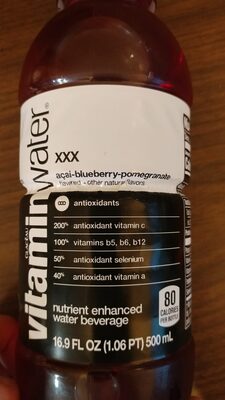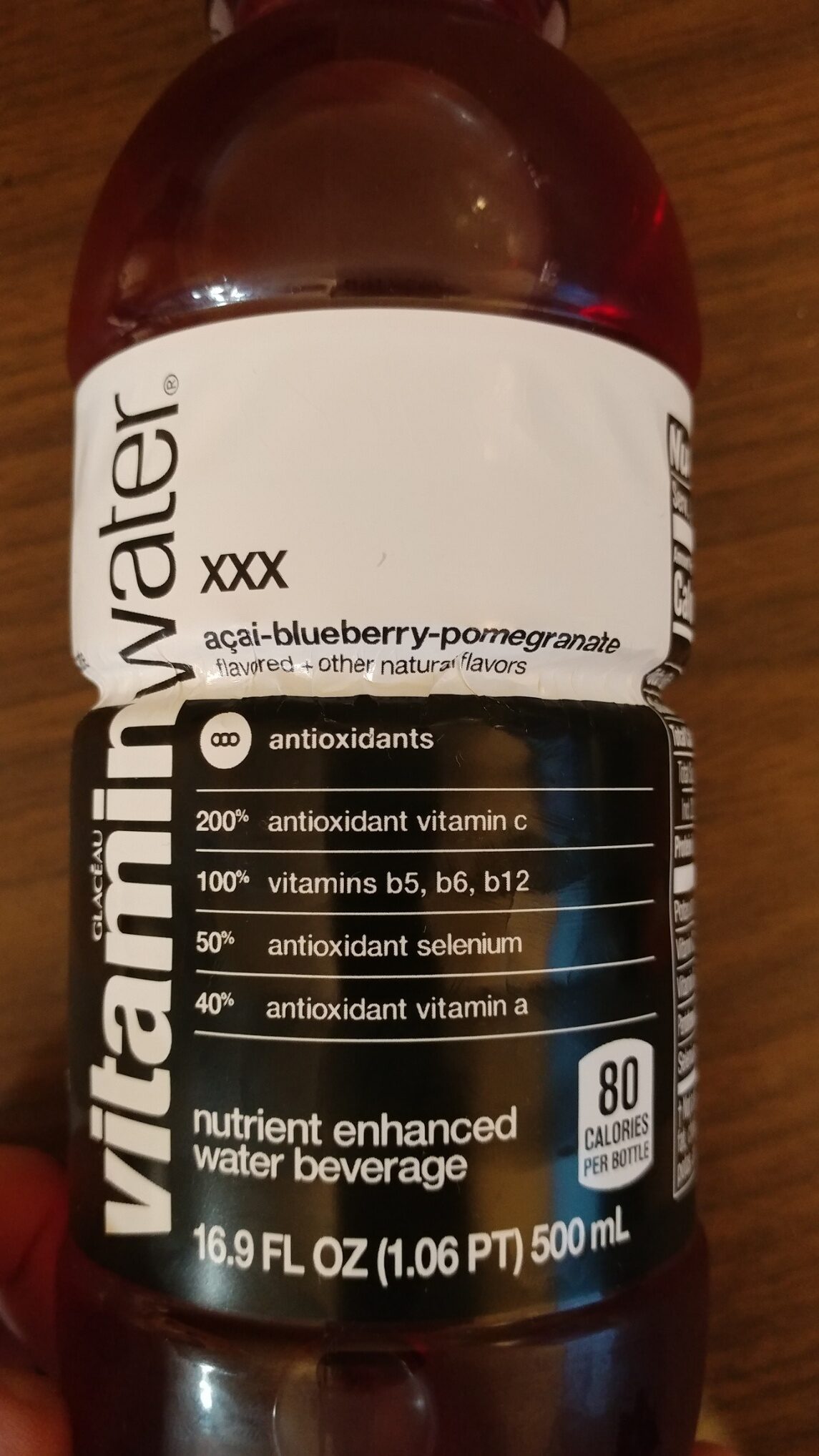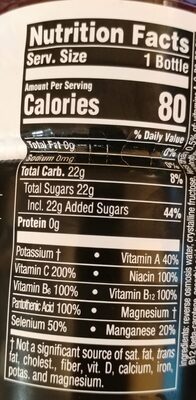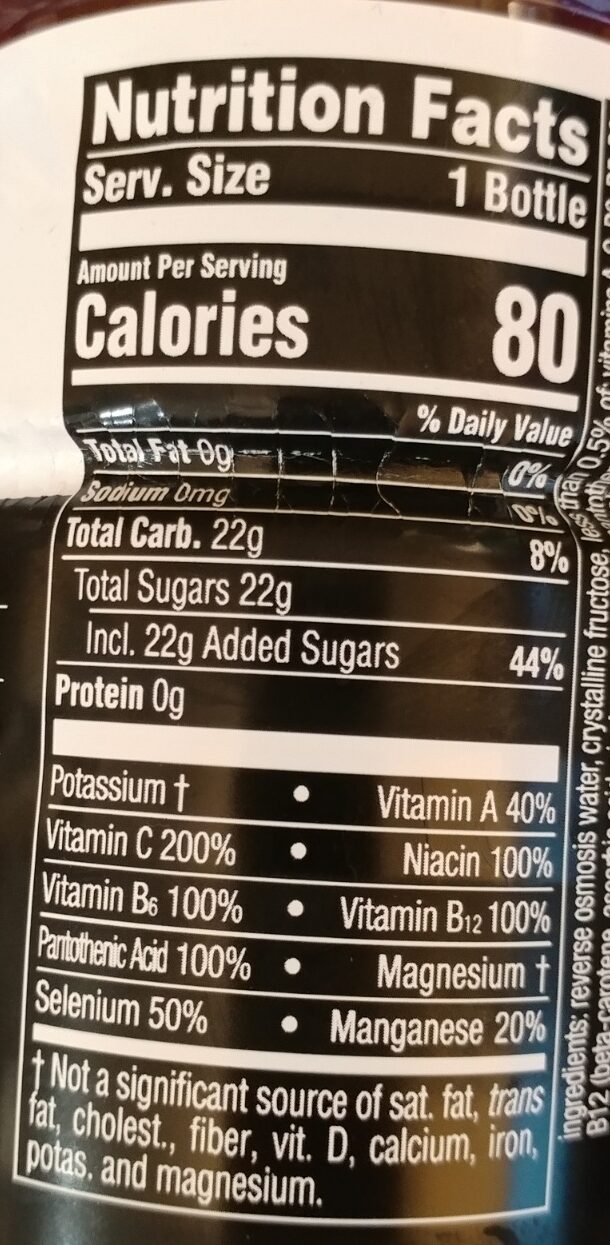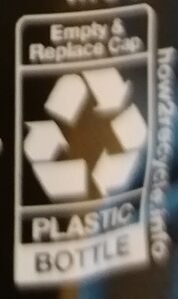xxx açai-blueberry-pomegranate - Vitaminwater - 16.9 fl oz
This product page is not complete. You can help to complete it by editing it and adding more data from the photos we have, or by taking more photos using the app for Android or iPhone/iPad. Thank you!
×
Barcode: 0786162003546 (EAN / EAN-13) 786162003546 (UPC / UPC-A)
Common name: Flavored water with acai, blueberry, and pomegranate
Quantity: 16.9 fl oz
Brands: Vitaminwater
Categories: Beverages, Waters, Vitamin waters
Stores: Wal-Mart
Countries where sold: United States
Matching with your preferences
Report a problem
Data sources
Product added on by kiliweb
Last edit of product page on by foodvisor.
Product page also edited by 6543210six, ecoscore-impact-estimator, gmlaa, halal-app-chakib, openfoodfacts-contributors, packbot, sierrakomodo, thaialagata, yuka.FOpcHeSuQpF4NvfzgIEP7ReeNfbdE9Z9PFsfog.
If the data is incomplete or incorrect, you can complete or correct it by editing this page.
